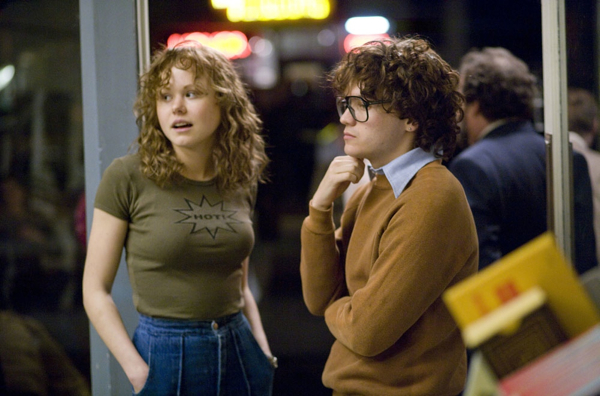Movie review by Greg Carlson
Gus Van Sant cleverly links past and present in “Milk,” a sturdy, carefully crafted biopic of the martyred gay rights activist. The past is represented by frequently integrated archival footage that the director combines with the fictionalized dramatizations of Harvey Milk’s political failures and triumphs. The present finds parallels between Milk’s 1978 campaign against Proposition 6 (an anti-gay California state ballot measure better known as the Briggs Initiative) and California’s 2008 Proposition 8, preventing same sex couples from marrying. Unlike several of Van Sant’s more lyrical, experimental features, including “Elephant,” “Last Days,” and “Paranoid Park,” “Milk” embraces a conventional storytelling approach that effectively serves the detailed screenplay by Dustin Lance Black.
Tracing the relatively short political career of the first openly gay non-incumbent politician elected to substantial office in the United States, “Milk” owes much to cinematographer Harris Savides’ beautiful imagery, Bill Groom’s evocative production design, and the understated costuming of Danny Glicker. Despite its 1960s and 1970s setting, the movie never gets bogged down in too much period specificity, and one suspects that the effect was consciously crafted. Van Sant also tempers the “highlights” approach so common in the movie biography with enough behind-the-scenes bonhomie that gay and straight viewers feel welcome in Milk’s company.
In the lead role, Sean Penn senses the grand opportunity before him and runs wild with it, infusing Milk with an almost bottomless wellspring of wit, charm, and warmth. By the time Milk has perfected his rallying refrain of “I’m Harvey Milk and I’m here to recruit you,” most audience members will be ready to join the colorful band of characters pulled in by Harvey’s gravitational field. Penn’s Milk tends to the idealized (see the Academy Award-winning documentary “The Times of Harvey Milk” as a valuable companion piece), and Van Sant ignores the suggestions that Milk could wield an ugly temper. Fortunately, the streamlining does not make Harvey Milk any less interesting.
Milk was murdered along with San Francisco mayor George Moscone on November 27, 1978 by Dan White, who had recently resigned his position on San Francisco’s Board of Supervisors. Josh Brolin plays White in the film, and largely avoids turning him into a bogeyman or a caricature. One of the movie’s most effective scenes sees an intoxicated White approach Milk
with almost gasping desperation. There is more than a hint that White wishes to explore some deeply submerged curiosities, but mostly, the audience witnesses White’s jealousy, frustration, and incredulity at Milk’s effortless popularity.
Many of the movie’s other supporting players register as memorably as Brolin. Emile Hirsch, as activist Cleve Jones, steals every scene in which he appears. James Franco plays Milk’s boyfriend Scott Smith, who grows weary at Harvey’s relentless self-promotion and quest to take center stage. Diego Luna, as Milk’s unstable lover Jack Lira, is not given as much screen time as the others and suffers as a result. The audience has little incentive to invest in the character, which negates any power Lira’s later scenes might otherwise project. In the end, however, the success of “Milk” rests mostly with Penn, who adds yet another impressive chapter to his storied acting career.
